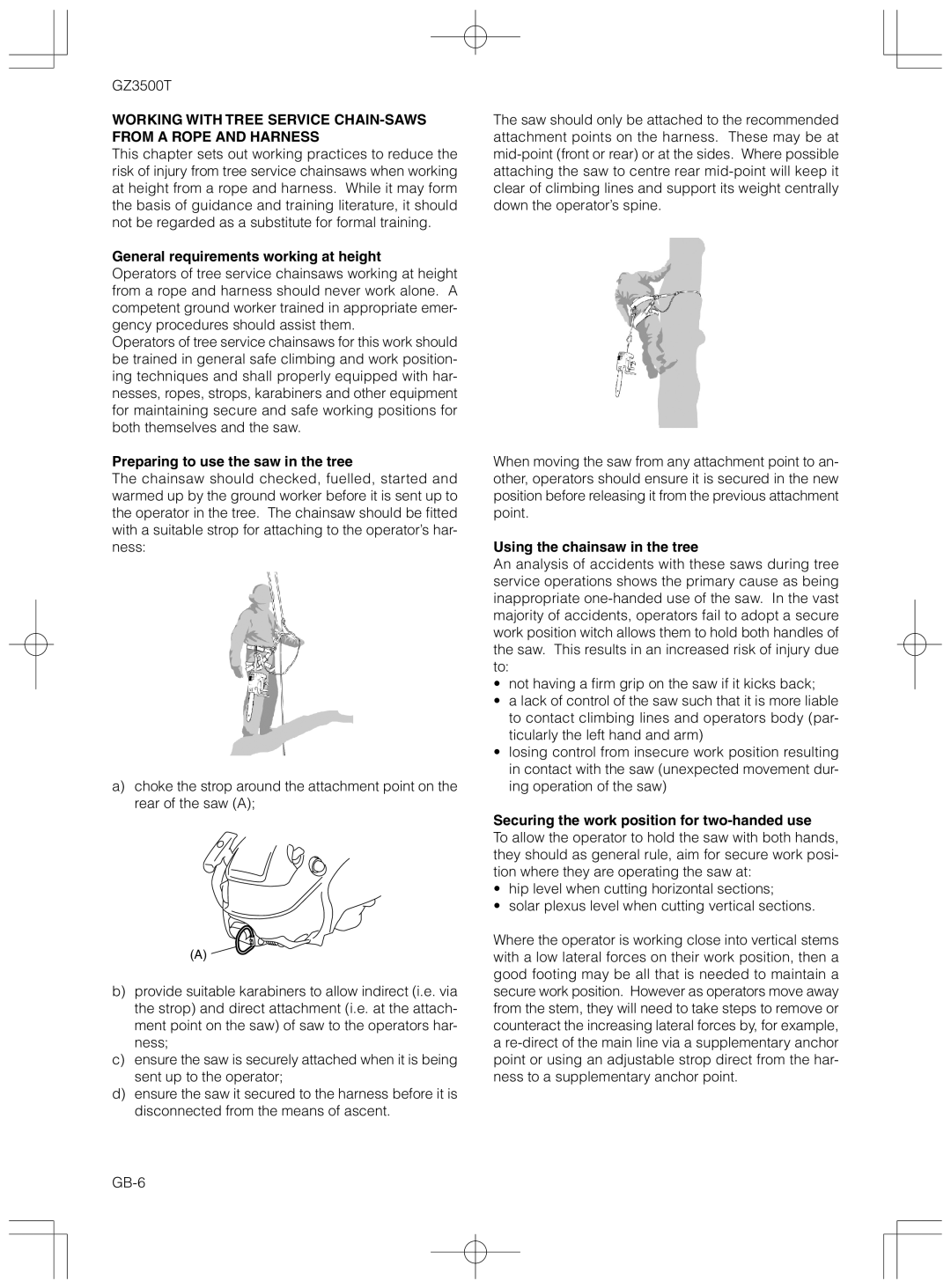GZ3500T specifications
The Zenoah GZ3500T is a powerful and versatile two-stroke engine designed for various outdoor applications, including gardening, landscaping, and industrial use. Known for its reliability and performance, the GZ3500T is particularly popular among professionals and enthusiasts who demand efficiency in their equipment.One of the main features of the Zenoah GZ3500T is its displacement of 34.6 cc, which strikes a balance between power and weight. This engine delivers robust performance, producing approximately 1.5 kW (2.0 hp) of power, making it suitable for various tasks such as trimming, cutting, and pruning. The engine’s design emphasizes a high power-to-weight ratio, allowing operators to handle the equipment comfortably without exhausting themselves.
The GZ3500T incorporates advanced technologies that enhance its performance and efficiency. One notable innovation is the use of a double diaphragm carburetor that optimizes fuel delivery under different operating conditions. This feature ensures consistent acceleration and power output, improving overall fuel economy and reducing emissions. Additionally, the engine is equipped with a specially engineered exhaust system that minimizes noise while maximizing power, making it an environmentally friendly option.
Another characteristic of the Zenoah GZ3500T is its lightweight design. Weighing approximately 5.2 kg (11.5 lbs), this engine is easy to handle and maneuver during operation. It also features a user-friendly start mechanism, such as an easy starting system that reduces kickback, allowing for hassle-free ignition even in cold conditions.
Durability is a key aspect of the GZ3500T. The engine is constructed with high-quality materials that withstand the rigors of demanding environments. The use of a high-strength crankcase and reinforced components ensures longevity, making it a reliable choice for both casual users and professionals.
In conclusion, the Zenoah GZ3500T is an exceptional two-stroke engine that combines power, efficiency, and durability. With its innovative technologies, user-friendly features, and lightweight design, it stands out as an optimal solution for various outdoor applications. Whether you're a landscaper, gardener, or simply someone looking for a reliable engine for your tools, the GZ3500T offers the performance and reliability you need to get the job done efficiently and effectively.

